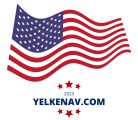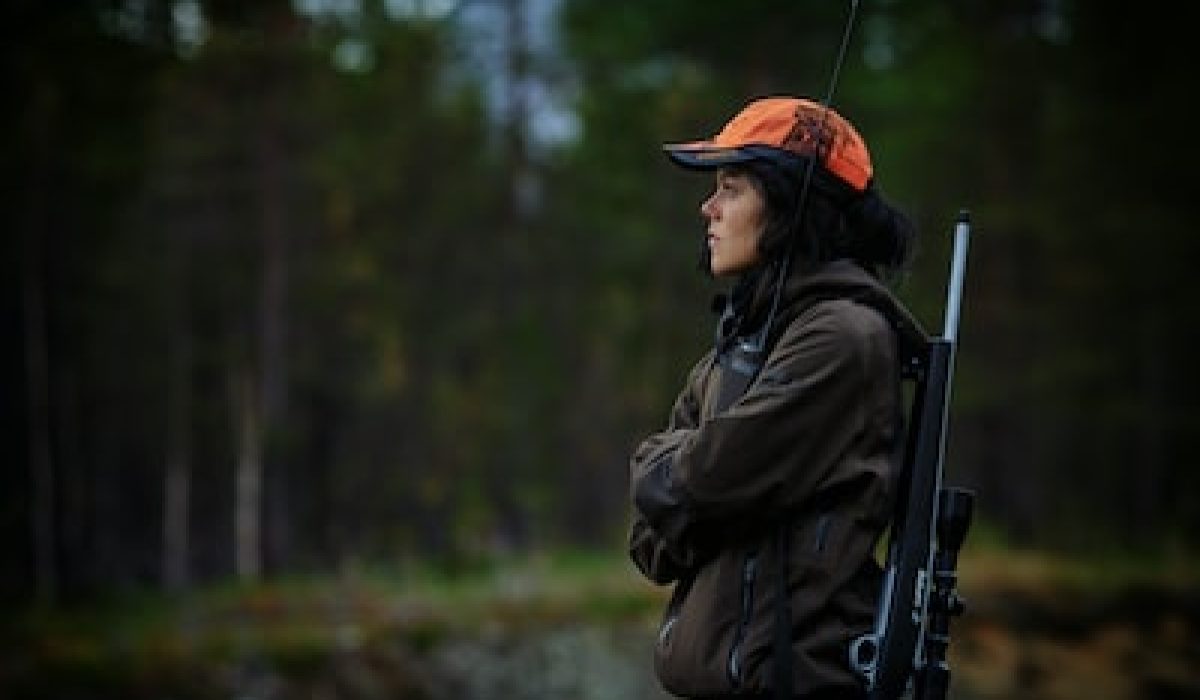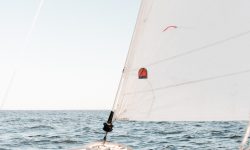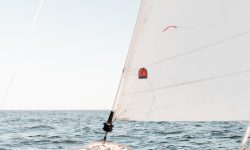Welcome to our comprehensive guide on essential hunting gear! Whether you are an experienced hunter or a beginner looking to embark on your first hunting adventure, having the right equipment is crucial for a successful and enjoyable experience. In this blog post, we will explore the key components of a well-equipped hunting kit, ranging from the selection of the perfect hunting rifle and knife to the importance of proper hunting clothing and accessories. We will also delve into the significance of optimal hunting optics and scopes, effective hunting calls and decoys, as well as essential field and game processing equipment. Lastly, we will discuss the essential items to include in a comprehensive first aid kit for any unforeseen situations that may arise in the field. So, let’s dive in and ensure you are fully prepared for your next hunting expedition!
Choosing The Right Hunting Rifle
When it comes to hunting, having the right equipment is crucial. And one of the most important pieces of gear you’ll need is a hunting rifle. With so many options available on the market, it can be overwhelming to choose the right one. But fear not, we’re here to help. In this article, we’ll discuss the essential factors to consider when selecting a hunting rifle, ensuring that you make the right choice for your needs.
1. Purpose and Game
The first step in choosing the right hunting rifle is to consider your hunting purpose and the type of game you will be targeting. Different rifles are suited for different purposes and game sizes. For example, if you plan on hunting big game such as elk or moose, a larger caliber rifle with greater stopping power may be necessary. On the other hand, if you’re after small game like rabbits or birds, a smaller caliber rifle would be more appropriate. Determine your hunting goals and the size of the game you’ll be pursuing before making a decision.
2. Caliber and Ammunition
Once you’ve determined the purpose and game, the next step is to consider the caliber and ammunition of the hunting rifle. The caliber refers to the internal diameter of the rifle’s barrel and plays a significant role in its performance. Different calibers have different levels of recoil and stopping power, so it’s important to choose one that suits your shooting ability and the game you’ll be hunting. Additionally, consider the availability and affordability of ammunition for the chosen caliber, as this will impact your overall hunting experience.
3. Fit and Comfort
One often overlooked aspect when choosing a hunting rifle is the fit and comfort it offers. A rifle that fits well with your body size, arm length, and shooting style can greatly enhance your accuracy and shooting experience. Look for a rifle with adjustable features such as length of pull and cheek rest, allowing you to customize it according to your body proportions. It’s also important to consider the weight of the rifle, as you’ll be carrying it for extended periods during a hunt. A well-fitted and comfortable rifle will help you stay focused and perform at your best in the field.
Choosing the right hunting rifle is a decision that should not be taken lightly. It’s a personal choice that depends on various factors such as hunting purpose, game size, caliber, and comfort. By considering these essential factors and doing thorough research, you can ensure that you find a rifle that meets your needs and enhances your hunting experience. So get out there, get equipped, and happy hunting!
Selecting The Best Hunting Knife
When it comes to hunting, having the right equipment is essential for success. One of the most crucial tools a hunter can have in their arsenal is a reliable and high-quality hunting knife. A hunting knife serves various purposes and is a versatile tool that can be used for everything from field dressing game to preparing meals at the campsite. In this article, we will discuss the key factors to consider when selecting the best hunting knife to meet your specific needs.
Durability and Blade Material: One of the first things to consider when choosing a hunting knife is the durability and blade material. The blade should be made of high-quality steel that can withstand frequent use and retain its sharpness over time. Look for knives made from stainless steel or high carbon steel, as these materials are known for their strength and durability. A knife with a full tang blade, where the blade extends throughout the entire handle, is also preferable as it provides added strength and stability.
Blade Design and Size: The design and size of the blade are other important factors to consider. The most common blade designs for hunting knives are drop point, clip point, and tanto. Drop point blades are versatile and ideal for general hunting tasks, while clip point blades have a sharper and thinner point, making them suitable for precision tasks. Tanto blades, on the other hand, are known for their strength and are excellent for heavy-duty use. The size of the blade will depend on personal preference and the type of hunting you intend to do. A blade length between 3 to 5 inches is typically recommended for most hunting applications.
Handle Comfort and Grip: The comfort and grip of the handle are crucial for safe and efficient knife handling. Look for a hunting knife with an ergonomic handle design that fits comfortably in your hand and prevents slippage. Handles made from materials such as rubber, textured plastic, or wood are popular choices as they provide a secure and comfortable grip, even in wet or slippery conditions. Additionally, consider the shape and size of the handle to ensure it suits your hand size and grip preference.
| Key Considerations when Selecting a Hunting Knife: | |
|---|---|
| 1. Durability and Blade Material | Choose a knife made of high-quality steel that can retain sharpness over time. |
| 2. Blade Design and Size | Consider the type of blade design and size that best suits your hunting needs. |
| 3. Handle Comfort and Grip | Look for an ergonomic handle design with a secure and comfortable grip. |
A reliable hunting knife is an essential tool for any serious hunter. By considering factors such as durability, blade design, size, and handle comfort, you can select the best hunting knife that meets your specific requirements. A well-chosen hunting knife will not only make your hunting experience more efficient but also contribute to your overall safety and success in the field.
Must-Have Hunting Clothing And Apparel ⏬
The right hunting clothing and apparel are essential for any serious hunter. Whether you are braving extreme weather conditions or navigating through rough terrains, having the right gear can make all the difference in your hunting experience. From base layers to outerwear, it is important to choose clothing that provides comfort, protection, and functionality. In this blog post, we will take a closer look at the must-have hunting clothing and apparel items that every hunter should consider adding to their gear collection.
Base Layers: Base layers are the foundation of your hunting clothing system. They are designed to regulate your body temperature by wicking away moisture and insulating your body. Opt for base layers made of merino wool or synthetic materials that offer moisture-wicking properties. These materials will keep you dry and comfortable, even during intense physical activity.
Insulating Layers: When hunting in colder climates, insulating layers are crucial to keeping warm. Look for insulated jackets or vests that provide excellent insulation without adding bulk. They should be lightweight and offer thermal properties to retain body heat efficiently. Additionally, consider getting insulated pants or bibs to protect your lower body from the cold.
Essential Hunting Accessories 👇
Hunting is a popular outdoor activity that requires proper equipment and accessories. Whether you are a seasoned hunter or a beginner, having the essential hunting accessories is crucial for a successful and enjoyable hunting experience. In this blog post, we will explore some of the must-have hunting accessories that every hunter should consider. So, let’s dive in and check out the essential hunting gear checklist!
1. Hunting Backpack: A hunting backpack is an essential accessory that allows you to carry all your gear conveniently. Look for a backpack with multiple compartments and durable straps to ensure you can comfortably store and transport your essentials throughout your hunting expedition.
2. Hunting Knife: A hunting knife is an indispensable tool for every hunter. It serves multiple purposes, from field dressing game to cutting ropes and branches. Choose a hunting knife with a sturdy blade and ergonomic handle for a secure grip and easy handling.
3. Binoculars: Binoculars are essential for scouting and spotting game from a distance. Invest in a high-quality pair of binoculars with a good magnification power and a wide field of view. This will assist you in identifying game and assessing their movements accurately.
4. Game Calls and Decoys: Game calls and decoys are valuable tools used to attract and lure game animals. These accessories mimic animal sounds and behaviors, making it easier for hunters to entice their targets. Ensure you have a variety of calls and decoys suitable for different game species.
5. Rangefinder: A rangefinder is a handy tool that helps hunters determine the distance between themselves and their target. This is especially useful when making accurate long-range shots. Look for a rangefinder with a reliable distance measurement and easy-to-read display.
6. GPS Device: When venturing into unfamiliar hunting grounds, a GPS device can be a lifesaver. It helps you navigate through dense woods, mark important locations, and safely find your way back. Make sure to choose a GPS device with excellent reception and long battery life.
7. Game Bags: Game bags are crucial for safely and hygienically transporting harvested game. They help protect the meat from dirt, insects, and spoilage. Opt for game bags made of breathable material to preserve the quality of the meat for longer durations.
8. First Aid Kit: Accidents can happen, even during hunting trips. It is essential to carry a comprehensive first aid kit that includes bandages, antiseptic solutions, pain relievers, and other necessary medical supplies. This ensures you are prepared to handle any minor injuries or emergencies that may arise.
9. Headlamp: A headlamp is an essential accessory for hunting during low-light conditions or at night. It provides hands-free illumination, allowing you to navigate safely, set up camp, and track game more effectively. Look for a headlamp with adjustable brightness settings and a comfortable headband.
10. Multi-Tool: A multi-tool is a versatile accessory that combines various tools in one convenient package. It typically includes pliers, screwdrivers, knives, and other useful implements. A multi-tool proves invaluable for quick fixes, gear adjustments, and general outdoor tasks.
Optimal Hunting Optics And Scopes
When it comes to hunting, having the right gear can make all the difference in having a successful and enjoyable experience. While rifles and knives are essential tools, another key component of a hunter’s arsenal is their optics and scopes. Optimal hunting optics and scopes can greatly enhance a hunter’s ability to accurately locate and target game, especially at longer distances. In this article, we will explore the importance of selecting the right optics and scopes for hunting, as well as provide a helpful checklist to ensure you have all the essential gear.
Having the right optics and scopes can significantly improve a hunter’s accuracy and success rate. High-quality optics allow hunters to see objects with clarity and precision, even in low-light conditions. This is particularly important during early morning or late evening hunts when visibility may be compromised. Additionally, scopes provide magnification, allowing hunters to zoom in on targets and achieve more accurate shots. Whether you are hunting deer, elk, or other game, investing in a reliable scope can give you a significant edge in the field.
When selecting hunting optics and scopes, there are a few key factors to consider. Firstly, it is important to choose the right magnification power for your specific hunting needs. A lower magnification of around 3-9x is suitable for shorter range hunting, such as dense forests or thick brush areas. On the other hand, for long-range hunting, a higher magnification of 10x or more may be necessary to accurately spot and target game from a distance. It is also important to consider the size and weight of the optics and scopes, as these can impact your comfort and maneuverability in the field.
- Hunting Optics Checklist:
- ✔ Binoculars: A quality pair of binoculars is essential for scouting and locating game before taking a shot.
- ✔ Rifle Scope: Choose a scope that provides the right magnification and features for your hunting style and environment.
- ✔ Spotting Scope: A spotting scope can be helpful for identifying game from a distance and evaluating trophy quality.
- ✔ Range Finder: A range finder enables you to accurately measure distances and make precise shots.
- ✔ Lens Cleaning Kit: Keep your optics clean and clear for optimal performance in the field.
Investing in high-quality hunting optics and scopes is not only beneficial for your success as a hunter but also for ensuring ethical and accurate shots. Remember to consider your hunting environment and specific needs when selecting your optics, and always keep them properly maintained for optimal performance. With the right gear and a keen eye, you’ll be well-equipped to tackle any hunting adventure that comes your way.
Types of Optics Recommended Magnification Binoculars 8x – 10x Rifle Scope 3-9x (short-range) or 10x+ (long-range) Spotting Scope 20x – 60x
Effective Hunting Calls And Decoys
When it comes to successful hunting, having the right equipment is essential. This includes not only your hunting rifle and knife but also specific tools and gear that can help attract your prey and provide you with an advantage in the field. In this blog post, we will be discussing the importance of effective hunting calls and decoys. These tools are designed to mimic the sounds and appearances of various animals, attracting them to your location and increasing your chances of a successful hunt.
One of the most crucial aspects of hunting is being able to lure game animals to your desired spot. This is where hunting calls come into play. Hunting calls are devices that produce specific sounds to mimic the natural calls made by animals such as deer, elk, or ducks. By studying and understanding the behavior of your target animal, you can use hunting calls to communicate with them and create a sense of curiosity or urgency. This can entice the animal to come closer to investigate the source of the sound, giving you a clear shot opportunity.
There are various types of hunting calls available, each designed for different species and scenarios. For example, duck calls are used to imitate the sounds made by ducks and can be used to attract them to your hunting area. Deer calls, on the other hand, can mimic the grunts or bleats made by deer, which can be effective during the rutting season when bucks are actively searching for does. Having a selection of hunting calls that cover different animal species can significantly increase your chances of a successful hunt.
The Role of Decoys in Hunting
While hunting calls aim to attract animals through sound, decoys are essential for creating a visual lure. Hunting decoys are life-like replicas of animals that are placed strategically in your hunting area to make it appear more attractive to game animals. Decoys are typically made from lightweight materials such as plastic or foam, and they come in various shapes and sizes depending on the target species.
The purpose of hunting decoys is to mimic the presence of live animals and provoke a response from game animals. For example, hunters may employ deer decoys during the rutting season to provoke territorial behavior in bucks or duck decoys to attract other ducks to a particular pond or water body. By strategically placing decoys and using realistic movement techniques, you can trick game animals into thinking that your hunting area is safe and desirable, increasing your chances of a successful hunt.
Conclusion
Effective hunting calls and decoys are invaluable tools for any serious hunter. By using hunting calls to mimic animal sounds and decoys to create visual attractants, you can significantly improve your chances of a successful hunt. However, it’s important to note that using these tools requires practice, patience, and a good understanding of the target animal’s behavior. Before heading out into the field, take the time to familiarize yourself with your hunting calls and decoys, ensuring you can use them effectively and ethically. With the right gear and proper techniques, hunting calls and decoys can become powerful assets in your hunting arsenal.
Essential Field And Game Processing Equipment
The Essential Field And Game Processing Equipment
When it comes to hunting, having the right equipment is essential for a successful outing. While many hunters focus on their firearms and knives, overlooking the importance of proper field and game processing equipment can lead to frustration and wasted time in the field. Whether you are a seasoned hunter or new to the sport, having the necessary tools to field dress and process your game is critical to ensure you make the most of your hunting experience.
One of the most important pieces of field and game processing equipment is a quality hunting knife. Choosing the right hunting knife can make all the difference when it comes to processing your game efficiently. Look for a knife with a sharp, durable blade and a comfortable handle. A knife with a gut hook can also be helpful for field dressing. Make sure to keep your knife clean and sharp to ensure it performs at its best.
In addition to a quality hunting knife, a comprehensive field dressing kit is another essential piece of equipment for hunters. This kit should include items such as latex gloves, a bone saw, a game bag, and a compact field dressing tool. These tools will allow you to easily remove the hide, separate the quarters, and remove the organs of your harvested game. Having a kit with all the necessary tools in one convenient package can save you time and effort in the field.
A game cart or pack is also a valuable asset when it comes to transporting your harvested game. These devices are designed to make it easier to move your game from the field to your vehicle. Look for a sturdy cart or pack that can handle the weight of your game and navigate various terrains. This will not only save you energy but also help preserve the quality of your meat.
Essential Field And Game Processing Equipment Quality hunting knife Comprehensive field dressing kit Game cart or pack
Lastly, a meat grinder and vacuum sealer can be valuable tools for processing your game at home. These items allow you to grind the meat for various recipes and properly seal it for storage. By processing your own game, you can ensure the quality and freshness of the meat while having more control over the cuts and preparation.
In conclusion, when it comes to hunting, having the right field and game processing equipment is essential. A quality hunting knife, a comprehensive field dressing kit, a game cart or pack, and a meat grinder and vacuum sealer are all important tools that can make your hunting experience more efficient and enjoyable. Investing in these essential items will not only save you time and effort in the field but also allow you to process and preserve your game with precision and quality.
Preparing A Comprehensive First Aid Kit
When heading out on a hunting trip, it is crucial to be prepared for any unexpected mishaps or injuries that may occur. One of the most important items to have in your hunting gear is a comprehensive first aid kit. This kit should contain essential supplies that can address a wide range of injuries and emergencies. Here is a list of key items that should be included in your hunting first aid kit:
- Bandages and Dressings: It is essential to have a variety of bandages and dressings in different sizes and shapes. These can be used to cover wounds, control bleeding, and prevent infection.
- Antiseptic Wipes and Ointments: Keeping wounds clean is crucial to prevent infections. Antiseptic wipes and ointments help disinfect wounds before applying bandages.
- Adhesive Tape and Safety Pins: These items are useful for securing bandages or making improvised splints or slings for broken bones or sprains.
- Tweezers and Scissors: Tweezers can help remove splinters or debris from wounds, while scissors are essential for cutting bandages or clothing in emergency situations.
In addition to these basic items, it is also important to include medications and treatments for specific conditions that may arise during a hunting trip. Some essential additions to your first aid kit should include:
Medications Treatments Antihistamines Burn Gel Painkillers Insect Sting Relief Antibiotics Eye Drops Epinephrine Auto-Injector Oral Rehydration Salts
Remember, always check expiration dates and restock your first aid kit regularly to ensure that all items are in good condition and ready to be used. It is also advisable to have some basic knowledge of first aid procedures and techniques to be able to provide immediate care and assistance in case of an emergency. By being well-prepared with a comprehensive first aid kit, you can enjoy your hunting trip with peace of mind knowing that you are ready to handle any unforeseen circumstances.
Frequently Asked Questions
What factors should I consider when choosing a hunting rifle?
When choosing a hunting rifle, you should consider factors such as caliber, action type, weight, and accuracy.
What factors should I consider when selecting a hunting knife?
When selecting a hunting knife, you should consider factors such as blade material, blade length, handle grip, and knife design.
What are some must-have hunting clothing and apparel items?
Some must-have hunting clothing and apparel items include base layers, camouflage clothing, waterproof outerwear, hunting boots, and gloves.
What are some essential hunting accessories?
Some essential hunting accessories include binoculars, a hunting backpack, a headlamp, a range finder, and a GPS device.
What should I consider when choosing hunting optics and scopes?
When choosing hunting optics and scopes, you should consider factors such as magnification power, lens quality, reticle type, and durability.
What are some effective hunting calls and decoys?
Some effective hunting calls and decoys include duck calls, deer calls, turkey calls, and realistic decoys specific to the target game.
What are some essential field and game processing equipment?
Some essential field and game processing equipment includes a field dressing kit, a game cart or sled, a meat grinder, and a cooler for storage.
What items should I include in a comprehensive first aid kit for hunting?
A comprehensive first aid kit for hunting should include items such as bandages, antiseptic wipes, adhesive tape, pain relievers, and a first aid manual.




